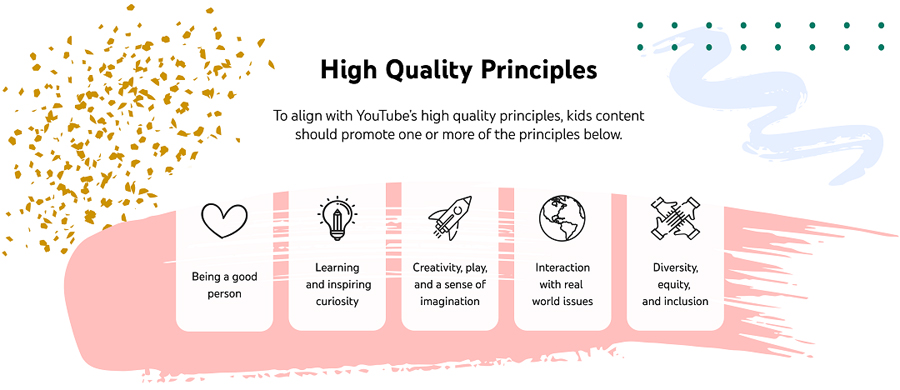As kids and teens spend more time online, it’s important to protect their experience while encouraging exploration. Anchored on its commitment to responsibility, YouTube invested heavily over the years to build YouTube Kids, a dedicated kids destination for a safer, family-friendly place for young ones to explore their imagination and curiosity.
To live up to its responsibility as an open platform while protecting its community, YouTube’s principles are organized around four “Rs”: removing harmful content, raising authoritative voices, reducing borderline content, and rewarding trusted creators. These pillars are applied across a range of content, grounding its efforts to protect kids and families. Here’s how they complement YouTube’s existing safety and digital wellbeing options and privacy and data practices:
Removing harmful content
YouTube has clear policies prohibiting content that exploits or endangers minors on the platform. Among the measures taken include removing violative content as quickly as possible, as well as a regular review of policies with external experts to ensure they are current. For example, YouTube has updated its policy to cover content targeted towards young minors and families that contains sexual themes, violence, obscenity, or other mature themes. In Q2 of 2021 alone, YouTube removed over 1.8 million videos for violations of its child safety policies.
YouTube Kids also has specific content policies and a much smaller set of channels and videos available that are allowed on the app. Part of its policies include the removal of overly commercial content from YouTube Kids, such as videos that only focus on product packaging or directly encourage children to spend money.
Raising authoritative voices, reducing borderline content
In collaboration with child development specialists, YouTube established a set of quality principles to help connect families with high-quality content. On YouTube Kids, only age-appropriate videos and channels are allowed on the platform. Moreover, the videos should also be enriching and engaging, and able to inspire curiosity and imagination, celebrate diverse perspectives, and encourage kids to uncover their own interests and passions.
These principles are also used to determine which high-quality content is recommended on YouTube. This means that when families are watching “made for kids” content, other recommended videos are aimed to be age-appropriate, educational, and can inspire creativity and imagination.
The same principles are also applied when it comes to removing channels from YouTube Kids and reducing the recommendation of kids content on YouTube that are of low-quality but do not necessarily violate YouTube’s Community Guidelines. Examples of this content include videos that are heavily commercial or promotional, encourage negative behaviors or attitudes, and more.
Rewarding trusted creators
Earlier this month, YouTube shared additional monetization policies aligned with the quality principles for channels that primarily create kids and family content on YouTube. Going forward, these principles will have not only an impact on recommendations and inclusion in YouTube Kids, but also on monetization.
Channels that primarily target young audiences or are classified as “made for kids” will need to deliver high-quality content and comply with kids-specific monetization policies. For example, channels that have predominantly low-quality kids content, such as “heavily commercial or promotional” or “encouraging negative behaviors or attitudes”, may be suspended from the YouTube Partner Program. On the other hand, if an individual video violates these quality principles, it may see limited or no ads. Before putting the policy in place, YouTube reached out to potentially impacted creators in order to support them before the changes take effect starting next month.
Ultimately, YouTube is committed to the goal of fostering a safe and enriching environment for families and children with the partnership of parents, creators, and experts.
Liked this post? Follow SwirlingOverCoffee on Facebook, YouTube, and Instagram.


